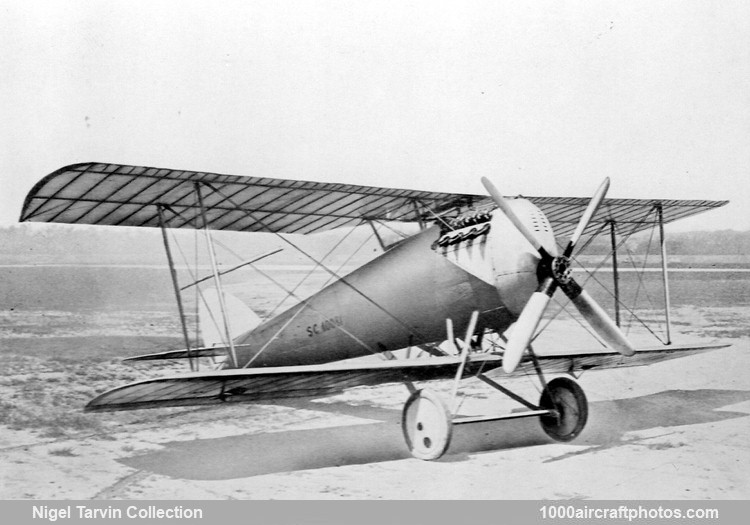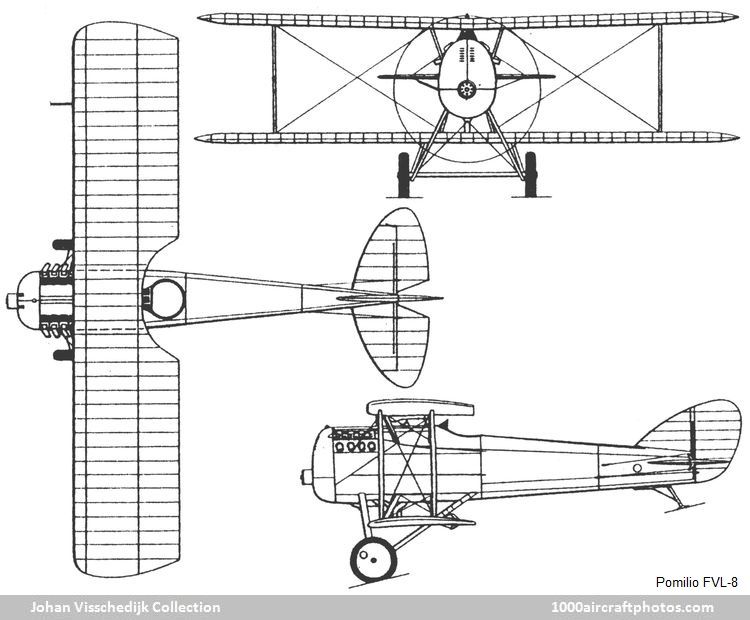In August 1918 Ing. Ottorino Pomilio and his brothers Alessandro and Ernesto sold the company to Ansaldo and moved to the USA. Six prototypes of the FVL-8 were ordered (s/n 40080 to 40085), and would be built in Indianapolis, Indiana, USA. However, it is not sure all six were completed, certain is that at least two were delivered to McCook Field, Dayton, Ohio, the 40081 (pictured above) in February 1919, where it received the Project Number "P-69", and later the 40084. On December 17, 1919, the wings of the latter were damaged when used for static strength testing, on March 8, 1920 its fuselage was damaged when used for testing 1.46 in (37 mm) high explosive ammunition.
The Flights Test Branch of the Engineering Division at McCook Field executed an official performance test on November 23, 1920, the results were disappointing, as stated in the Pilots' Observations Report:
"The general flying qualities of this airplane seem to make it unsuitable for pursuit work. It is slow, maneuvers poorly, and is longitudinally unstable. The airplane is difficult to land properly owing to its tendency to ground loop, and the type of tail skid supplied causes the machine to porpoise as soon as the skid touches the ground. This type of skid prevents easy taxying. The cooling is inadequate and the radiator is ineffectively shuttered. Engine mounting seems to give considerable trouble owing to the inherent vibration of the 8-cylinder Liberty."
With thanks to Kees Kort for the supplied details.
Span: 26 ft 8 in (8.13 m)
Length: 21 ft 8 in (6.60 m)
Height: 8 ft 2 in (2.49 m)
Wing area: 284 sq.ft (126.38 sq.m)
Empty weight: 1,726 lb (783 kg)
Loaded weight: 2,284 lb (1,036 kg)
Max speed: 135 mph (217 kmh)
Climb: 1,245 ft (397 m)/min
Service ceiling: 21,000 ft (6,400 m)
Endurance: 2 hr

